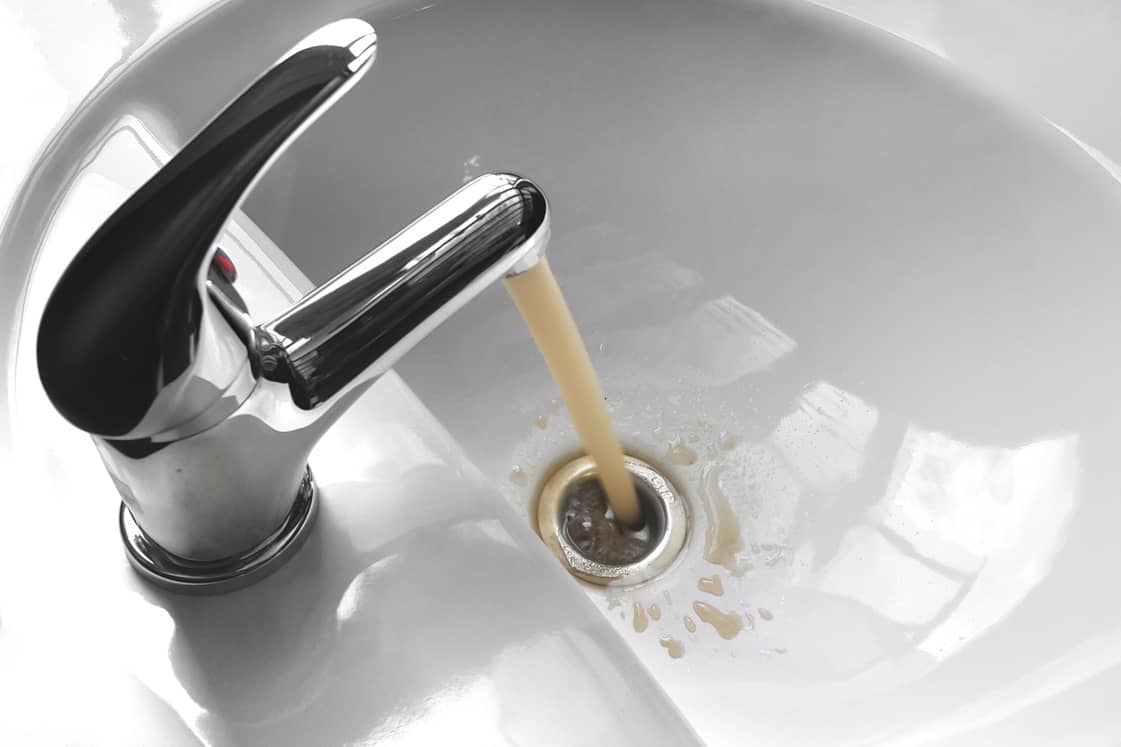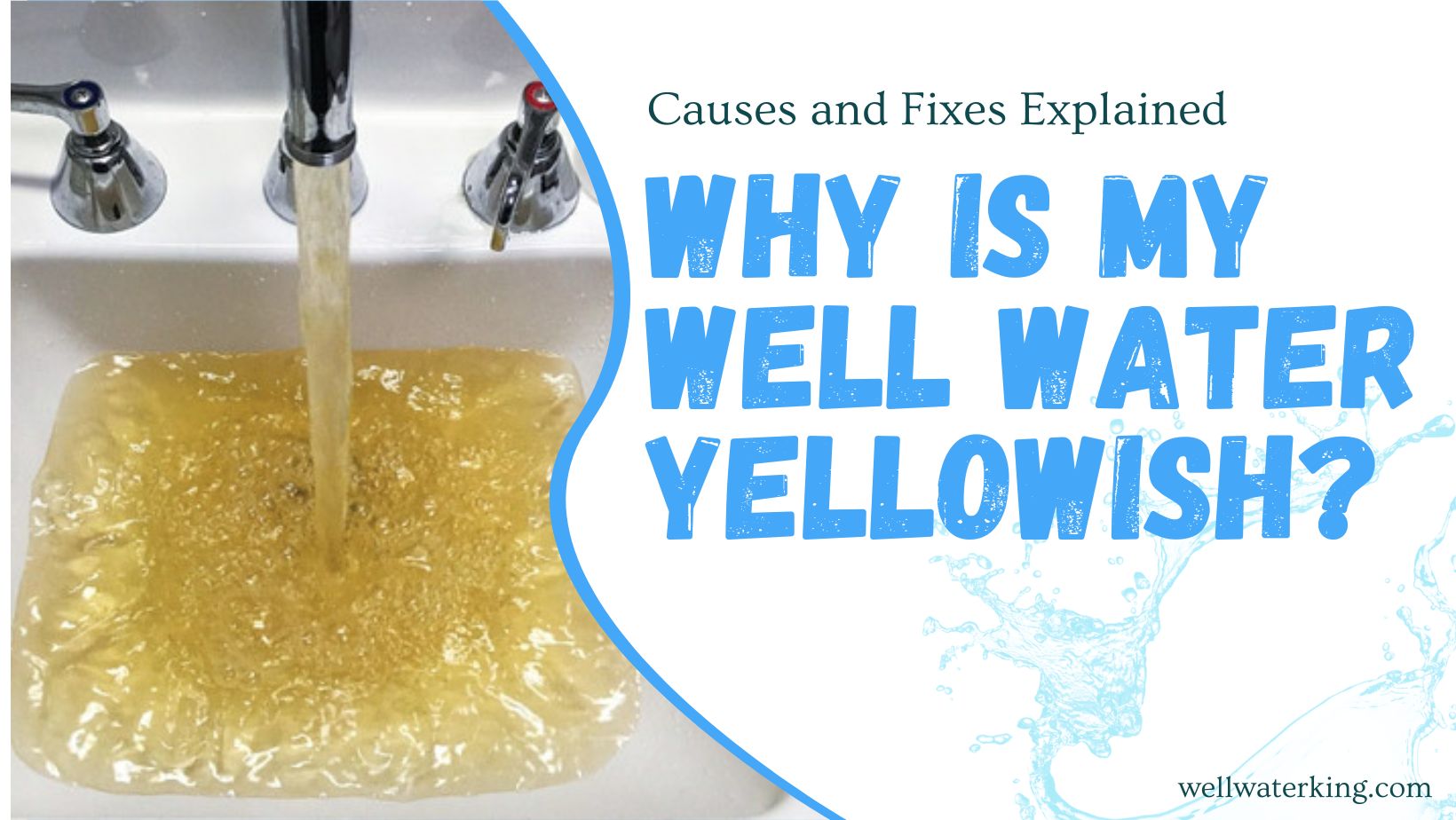You walk to the kitchen sink, turn on the faucet, and notice the water flowing out is an unappealing brown color. This discoloration can be alarming, leaving you to wonder if your well water is safe to use and drink. Brown well water is actually a common issue stemming from various causes.
It’s not only visually unappealing but also raises concerns about the safety and quality of your water. So, why is your well water suddenly brown?
Well water can turn brown due to high amounts of iron, manganese, tannins, or sediment in the water. Iron and manganese are naturally occurring metals that can dissolve into groundwater. As the water is pumped through your well system, these metals can oxidize and turn the water a brown, yellow, or red tint. Tannins are organic compounds from decaying leaves, plants, and trees that can also leach into the water supply.
Finally, sediment like clay, silt, dirt, and sand can be stirred up as water enters the well, discoloring the water. Testing the well water to determine the specific contaminants present is key to treating brown water issues. Common solutions include shock chlorination, sediment filters, or chemicals to control iron and manganese levels. Knowing the root cause will help you resolve the problem.
In this comprehensive guide, we will not only uncover the common causes of brown well water but also provide you with practical remedies to tackle this problem. From understanding the effects of brown well water on water quality to exploring different testing and treatment methods, we will equip you with the knowledge to address this issue effectively. So, let’s dive in and discover why your well water may be turning brown all of a sudden and how you can restore its clarity and safety.
Why is my well water brown all of a sudden?

Iron and Manganese
- Manifestation: High levels of iron and manganese in well water can cause brown or black stains and an unpleasant metallic taste. The water may also have a cloudy appearance. Water affected by iron often appears clear when first drawn but turns a reddish-brown after some time when exposed to air. This is due to the oxidation of dissolved iron. Manganese, on the other hand, can impart a black or dark brown tint to the water.
- Solution: Installing an iron filter or water softener can effectively remove iron and manganese from the water. Additionally, regular maintenance of the well and pipes can prevent the buildup of these minerals.
Rusty
- Manifestation: Corroded, rusting iron pipes or well casing leach iron particles into water, turning it brown/red. Brown or reddish-brown water is usually the result when corrosion affects the internal plumbing. The discoloration is due to rust particles being released into the water flow. You might also notice a metallic taste.
- Solution: Inspect and replace any corroded piping, particularly if it’s made of iron or steel. Switching to corrosion-resistant piping materials like copper or PVC can offer a long-term solution. Additionally, using a post-filtration system can help capture any rust particles in the water.
Sediment Buildup
- Manifestation: Fine particles of dirt, clay, sand settle and build up in well casing and plumbing. Causes water to be cloudy, murky brown. Worse after storms or disruptions that stir up sediment. Water may appear muddy or cloudy, especially after a heavy rainfall or a disturbance to the ground near the well. The murkiness is due to tiny particles suspended in the water.
- Solution: Installing a sediment filter or a sand separator can effectively remove sediment from the water. Regular maintenance of the well and pipes can also prevent sediment buildup.
Tannins
- Manifestation: Tannins, which originate from decaying organic matter like leaves or roots, can give water a tea-like color. It’s more of a yellowish to brown tint and often accompanies a somewhat musty or earthy taste. The water may also have a bitter taste.
- Solution: Installing a tannin filter or an activated carbon filter can effectively remove tannins from the water. Alternatively, a potassium permanganate feed pump can be used. Ensure the surrounding well area is clear from decomposing vegetation to minimize tannin infiltration.
Hot Water Heater
Manifestation: If only the hot water in your home appears brown, the issue may lie with your water heater. Sediments can build up over time at the bottom of the tank, and if these get stirred up, they can discolor the water. Alternatively, the inside of the heater may be corroding.
Solution: Installing a water softener can help address the issue of rusty hot water heaters. Regularly flush the water heater to remove any sediment buildup. If corrosion is the culprit, consider replacing the anode rod (which is designed to corrode instead of the tank) or, if the tank itself is compromised, replacing the entire water heater.
Popular solutions to brown water in well water problem
- Water Softeners: These devices use a process called ion exchange to remove minerals like iron and manganese, which can turn water brown. They replace these minerals with sodium or potassium ions, resulting in softer and clearer water.
- Iron Filters: Specifically designed to tackle high iron levels, these filters oxidize and trap iron, ensuring it doesn’t flow out of your taps.
- Sediment Filters: Effective for removing suspended particles like silt and sand that might cause cloudiness in your water.
- Activated Carbon Filters: These can remove organic compounds, tannins, and certain tastes and odors that may be associated with brown water.
- Oxidation Systems: By adding an oxidizing agent to the water (like ozone, hydrogen peroxide, or air), these systems convert dissolved iron and manganese to a solid form, which is then filtered out.
- Reverse Osmosis (RO) Systems: RO systems force water through a semi-permeable membrane, removing a wide range of contaminants including minerals and sediments that can discolor water.
- Regular Flushing: Periodically flushing your well can help remove sediments and prevent the buildup of iron bacteria.
- Shock Chlorination: This is a process of sanitizing a well using a high concentration of chlorine. It can be effective against iron bacteria, which might be a source of discoloration.
- Replace or Repair Pipes: Old, corroding pipes can be a source of brown water. Replacing them or addressing specific corroded sections can resolve the issue.
- Maintenance of Water Heater: If only the hot water is brown, sediment buildup or corrosion in the heater may be the cause. Regularly draining and maintaining your water heater can help.
In Conclusion
In conclusion, brown well water can be a cause for concern, but it’s important to understand that there are several probable causes and solutions to address this issue. Whether it’s high levels of iron and manganese, sediment buildup, rusty pipes, tannins, or a rusty hot water heater, identifying the specific cause of the discoloration is crucial to implementing the appropriate solution.
Installing a filtration system, water softener, or disinfection method can effectively remove minerals, sediment, and bacteria from the water. Regular maintenance of the well and pipes can also prevent many of the issues that lead to brown well water. Seeking professional help or conducting water tests can provide valuable insights into the specific cause of the discoloration and guide you towards the most effective remedy.
By taking the necessary steps to restore clarity and safety to your well water, you can ensure that you and your family have access to clean and healthy drinking water. Don’t let brown well water go untreated – take action today to address this issue and enjoy the benefits of clear and safe well water.





